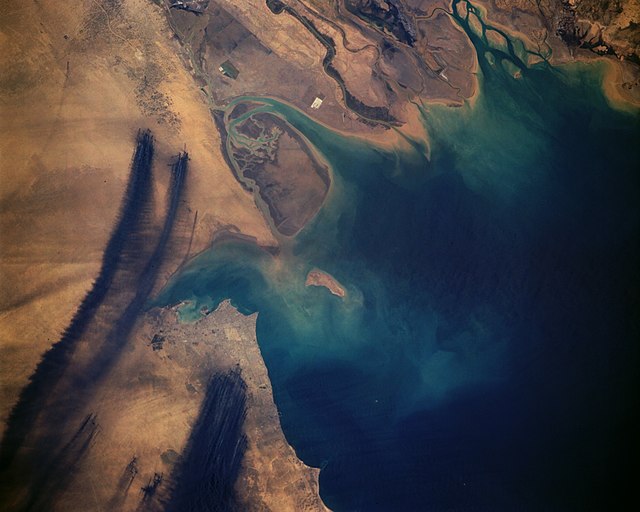Environmental impact of war
Study of the environmental impact of war focuses on the modernization of warfare and its increasing effects on the environment. Scorched earth methods have been used for much of recorded history. However, the methods of modern warfare cause far greater devastation on the environment. The progression of warfare from chemical weapons to nuclear weapons has increasingly created stress on ecosystems and the environment. Specific examples of the environmental impact of war include World War I, World War II, the Vietnam War, the Rwandan Civil War, the Kosovo War, the Gulf War, and the 2022 Russian invasion of Ukraine.
Agent Orange, a herbicide, being sprayed on farmland during the Vietnam War
Defoliant spray run, part of Operation Ranch Hand, during the Vietnam War by UC-123B Provider aircraft
Frying Bacon in the middle of the trenches, soaking in mud and chemicals left from all the bullets lying on the ground.
The Kuwaiti oil fires were caused by the Iraqi military setting fire to a reported 605 to 732 oil wells along with an unspecified number of oil filled low-lying areas, such as oil lakes and fire trenches, as part of a scorched earth policy while retreating from Kuwait in 1991 due to the advances of US-led coalition forces in the Gulf War. The fires were started in January and February 1991, and the first oil well fires were extinguished in early April 1991, with the last well capped on November 6, 1991.
Smoke plumes from a few of the Kuwaiti Oil Fires on April 7, 1991, as seen from Space Shuttle Atlantis during STS-37.
Oil well fires, south of Kuwait City. (Photo taken from inside a UH-60 Blackhawk; the door frame is the black bar on the right of the photo)
Kuwaiti oil well fire, south of Kuwait City, March, 1991
The Kuwaiti oil fires were not just limited to burning oil wells, one of which is seen here in the background, but burning "oil lakes", seen in the foreground, also contributed to the smoke plumes, particularly the sootiest/blackest of them (1991).







